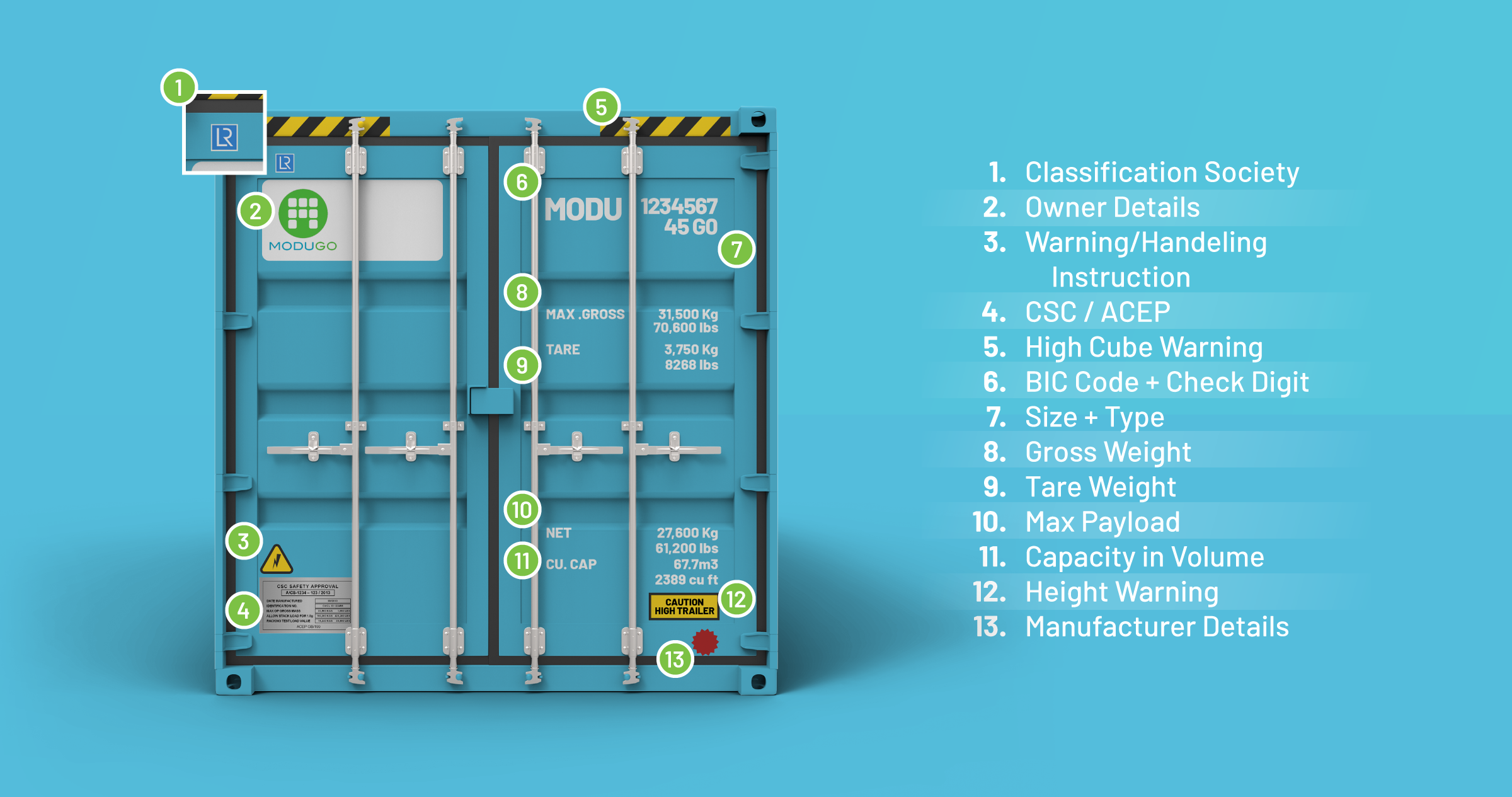What do those labels on your shipping container mean?
If you’ve ever had to travel on a highway, you’ve probably noticed the labels on shipping containers without even realizing it. Now, you’re the person responsible for making sure shipping container labeling requirements are met. How can you maintain compliance? Or, maybe you want to impress your family with trivia on the next road trip. How do you do it? Simple. Do your research. Keep reading for basic information on shipping container labels to get you started.
Why do shipping containers have labels?
Shipping containers have labels because governments require them. The labels convey all sorts of information to those who know how and where to look. They do everything from identify the specific container from the millions of others in the world, indicate the size and even notify us of what is contained inside them.
Shipping container labeling requirements: Where to find a label

Important markings can be found on all parts of a shipping container. Here is where you can find shipping container labels:
- Door end: The door end is the part of the container that holds the most information. On the door end, you will find the maximum gross weight, tare weight, maximum payload, height warning. You may also find the owner’s logo and repair recommendations.
- Side: The side has the identification number which contains the BIC code, serial number, and check digit.
- Top: The top includes the identification number and size and type codes.
- Front end: The front end includes the identification number and size and type codes.
Components of shipping container labels
Below are definitions of the common markings that people find on shipping containers. This will help you identify the labels when you see them:
Maximum gross weight
The maximum gross weight is a number found on the door end of the shipping container. It tells the people packing the container the maximum weight the container can carry in pounds and kilograms, including its own weight, which is called tare weight.
Maximum payload
The maximum payload is the maximum amount of weight that can be packed into the container as cargo. Misdeclaring this number can cost lives and property damage. This number matches the number on the packing slip and doesn’t include tare. It’s represented on the back of the container to let the customer know what to expect from the payload inside.
Height warning
Height markings are mandatory on shipping containers more than 8 feet, 6 inches tall. These are usually pictured as measurement figures on a yellow background outlined in black. This number is displayed on the right-hand corner of each side.
Identification Number
The identification number comprises three important parts: the BIC code, serial number, and check digit.
BIC code
The Bureau International des Containers et du Transport Intermodal (BIC) issues an owner code to shippers. Each code is unique to identify the owner of the specific container. There can be no duplicate BIC codes. The owner code, or BIC code, is the first 3 letters of the identification number. A fourth letter describes the equipment category.
Serial number
The serial number is 6 numbers serializing the shipping container. This allows for tracking of the container.
Check digit
The check digit is a digit within the serial number that is used to check the validity of a serialized shipping container’s identification number.
Size and type codes
ISO Codes tell the shipper the size and type of container no matter what region of the world they are in by using a standardized codification system that is globally accepted.
Other markings on a shipping container
Here are some other markings on a shipping container:
- Owner name and logo: This identifies the company that owns the shipping container.
- Hazard warnings: Plates that identify any hazardous materials contained in the shipment are present.
- Caution stickers: This includes “Warning High Cube” and other cautions.
- CSC plate: The Container Safety Convention (CSC) plate is required for international trading. It highlights the most important owner and safety information in one place.
What about hazardous materials?
Companies must clearly mark hazards and convey important information using labels on shipping containers to remain in compliance with existing guidelines. The Occupational Safety and Health Administration, or OSHA, states that shipping containers transporting certain hazardous materials:
“[A]n HCS 2012 label compliant with paragraph 1910.1200(f)(1) must be on the outside of the shipping container or attached to any accompanying shipping papers or bill of lading. This accommodation will provide basic information to downstream workers, such as warehouse or dock workers who may be exposed in case of a spill or release or other emergency. The shipping container should also be labeled in accordance with DOT and/or International Maritime Organization (IMO) labeling regulations or requirements during shipping.”
With these tips, you can identify shipping container labels and markings like a pro. Visit our recent posts to learn more helpful information about buying shipping containers.


